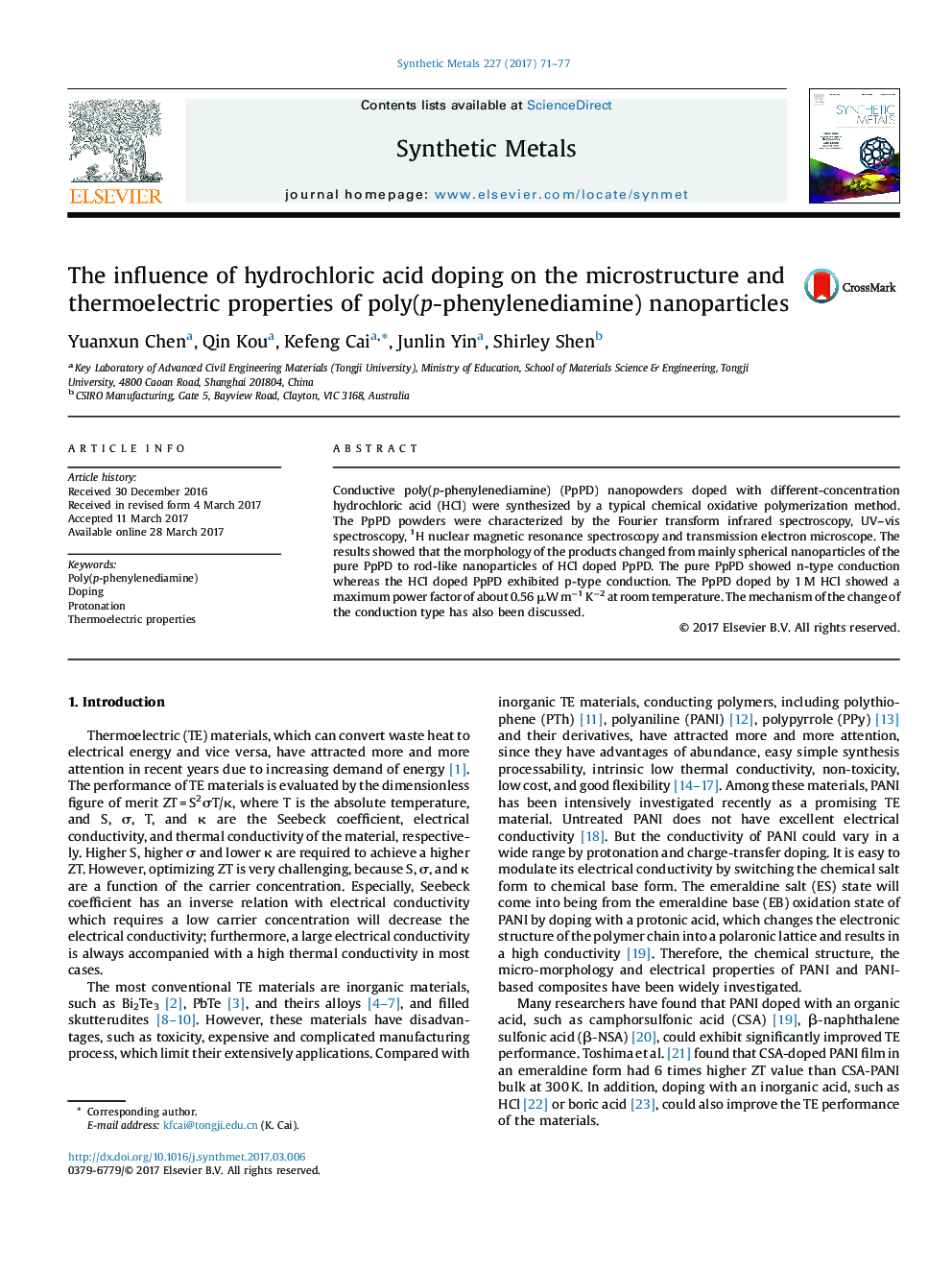| Article ID | Journal | Published Year | Pages | File Type |
|---|---|---|---|---|
| 5435409 | Synthetic Metals | 2017 | 7 Pages |
â¢PpPD powders doped with various concentrations of HCl were synthesized.â¢The degree of polymerization increased with the increasing of HCl concentration.â¢The morphology of the products changed after doping of HCl.â¢The Seebeck coefficient of the nanopowders is very high, up to 1232 μV/K.
Conductive poly(p-phenylenediamine) (PpPD) nanopowders doped with different-concentration hydrochloric acid (HCl) were synthesized by a typical chemical oxidative polymerization method. The PpPD powders were characterized by the Fourier transform infrared spectroscopy, UV-vis spectroscopy, 1H nuclear magnetic resonance spectroscopy and transmission electron microscope. The results showed that the morphology of the products changed from mainly spherical nanoparticles of the pure PpPD to rod-like nanoparticles of HCl doped PpPD. The pure PpPD showed n-type conduction whereas the HCl doped PpPD exhibited p-type conduction. The PpPD doped by 1 M HCl showed a maximum power factor of about 0.56 μW mâ1 Kâ2 at room temperature. The mechanism of the change of the conduction type has also been discussed.
Graphical abstractThe influence of the HCl concentration on the morphology and TE performance of the PpPD has been studied.Download high-res image (89KB)Download full-size image
